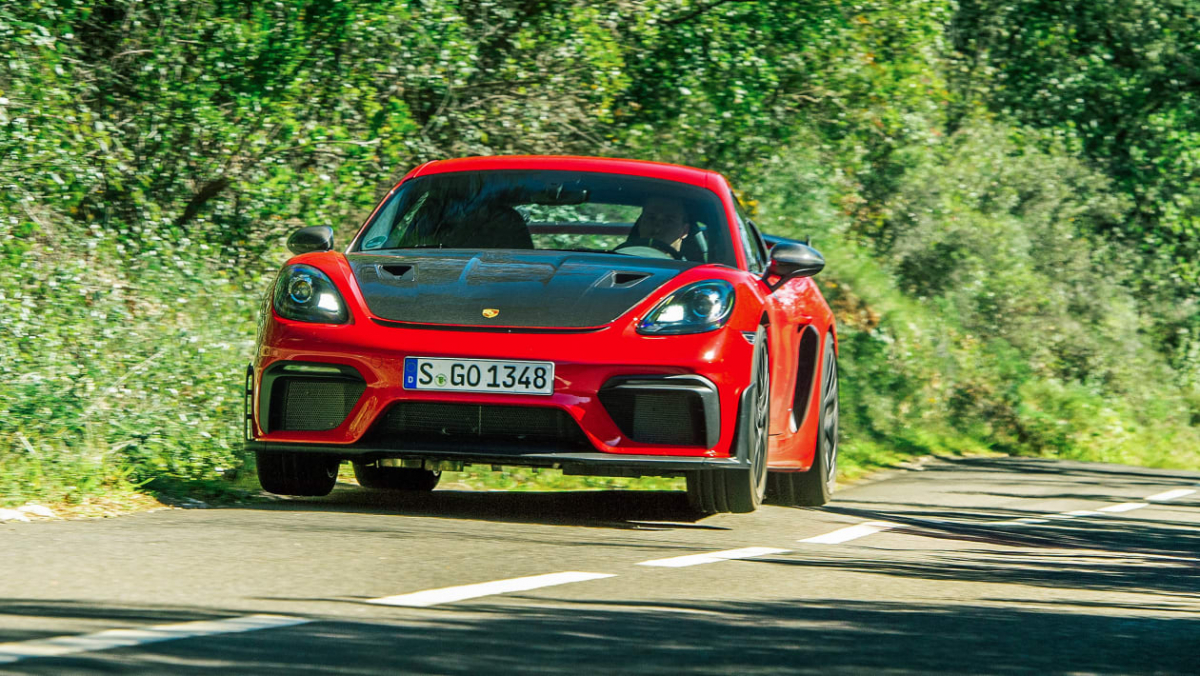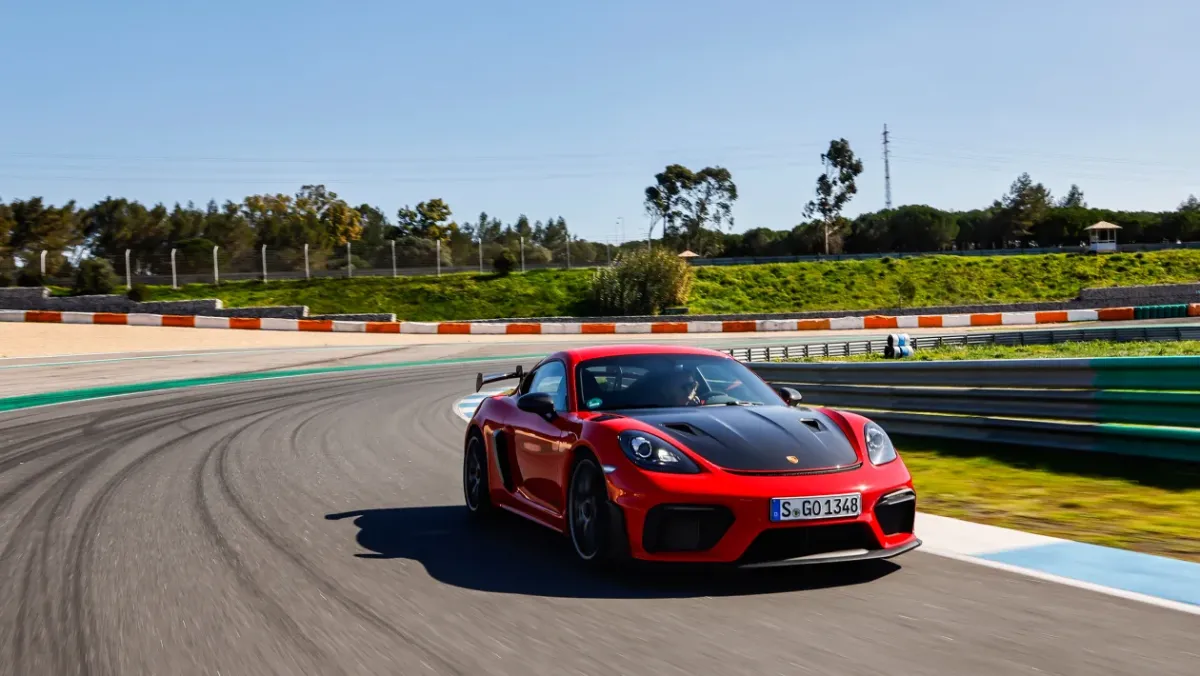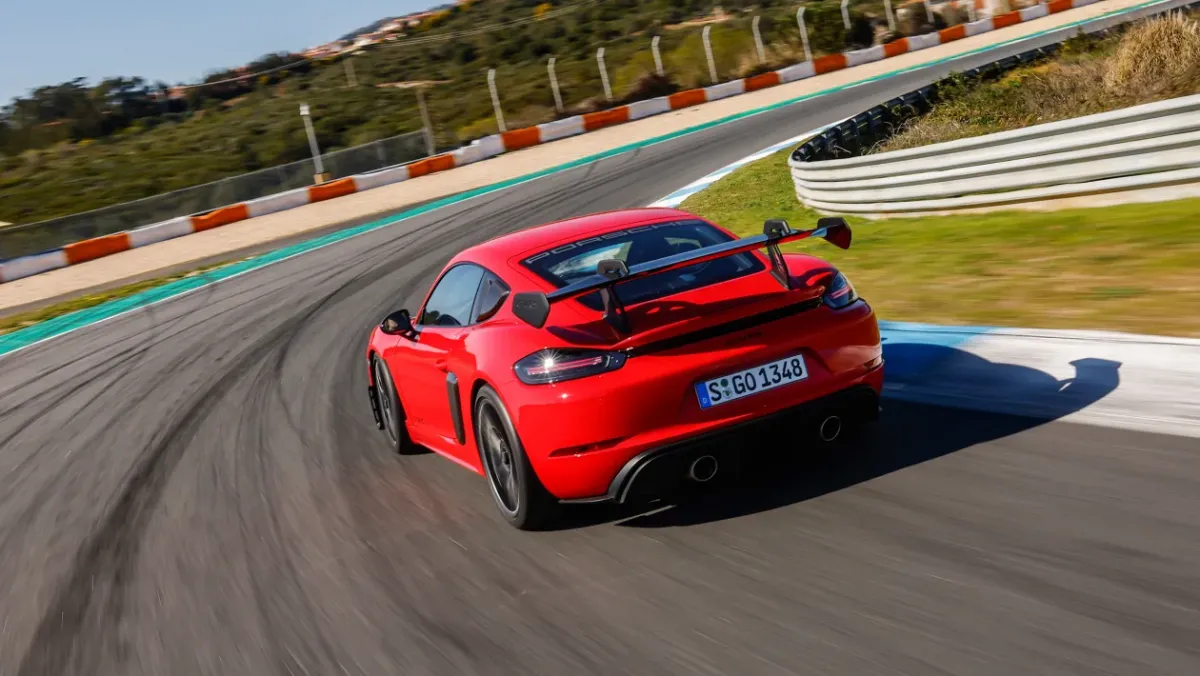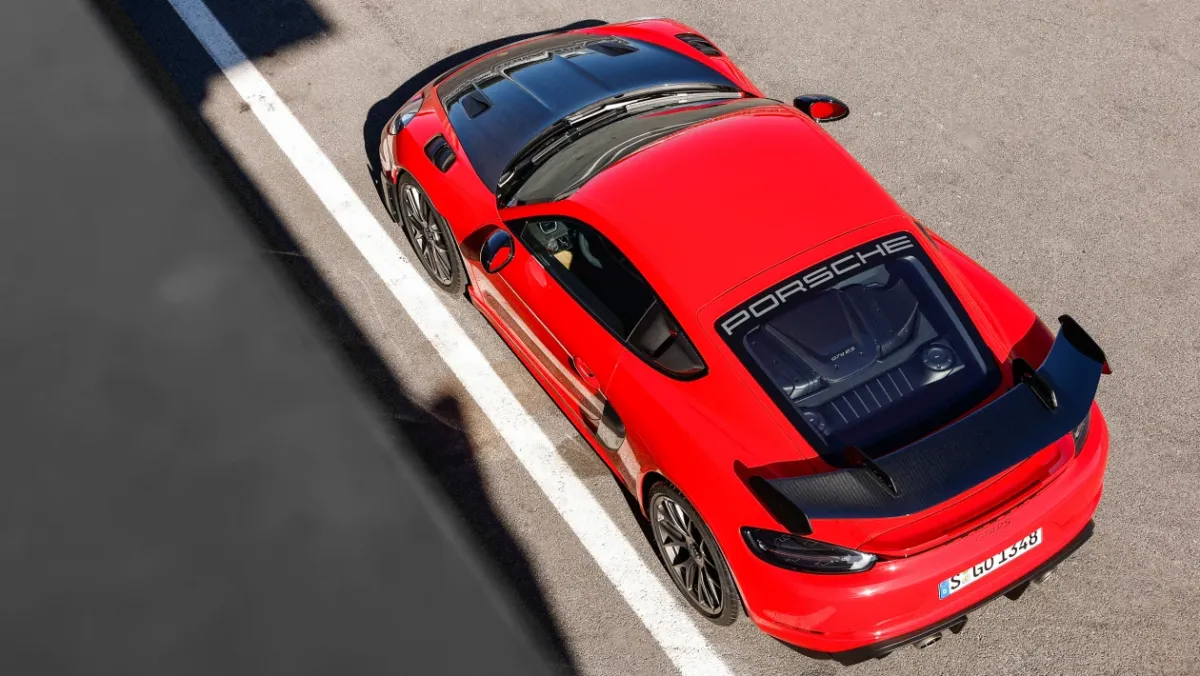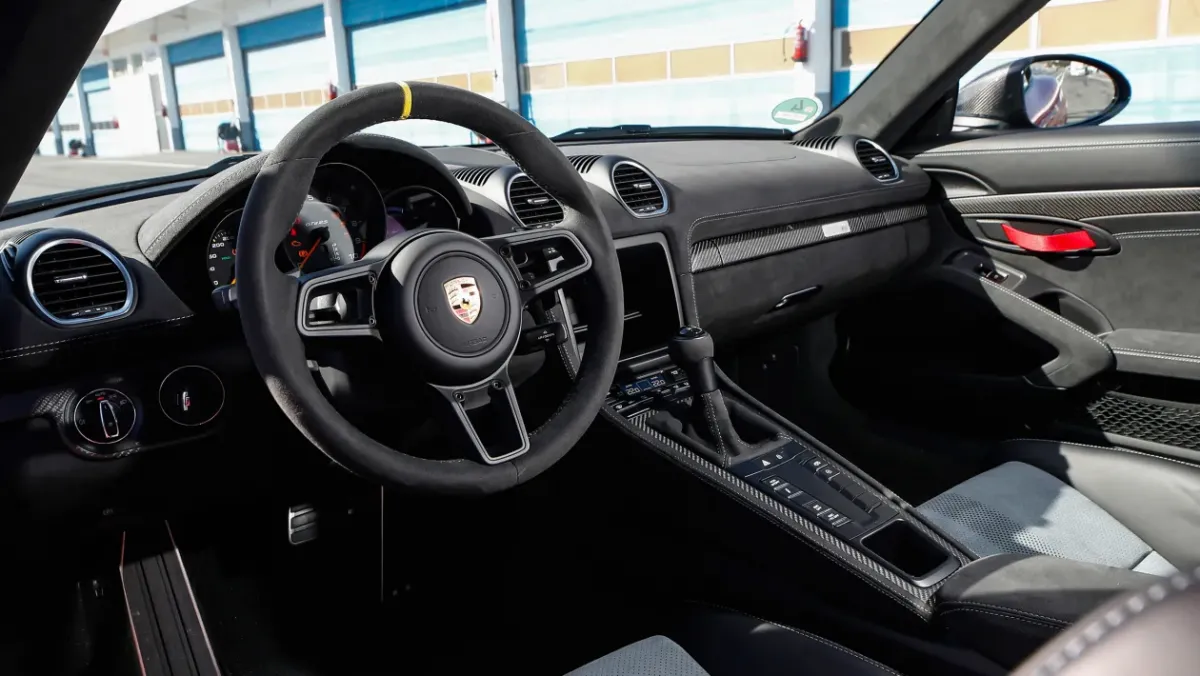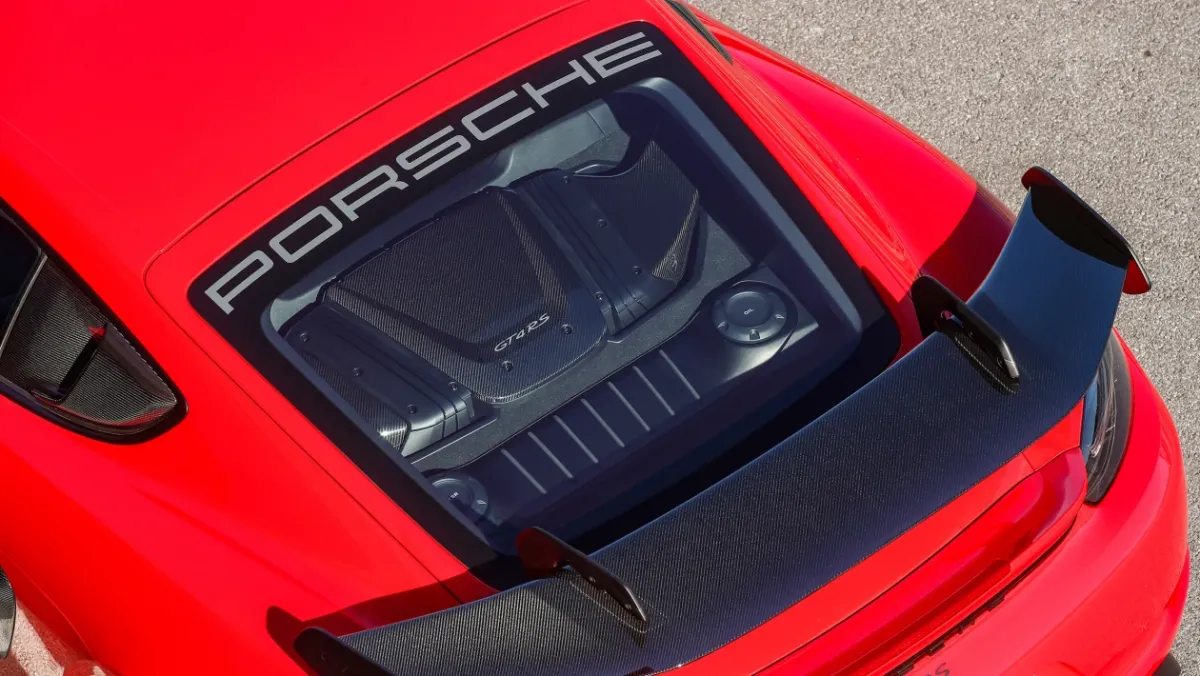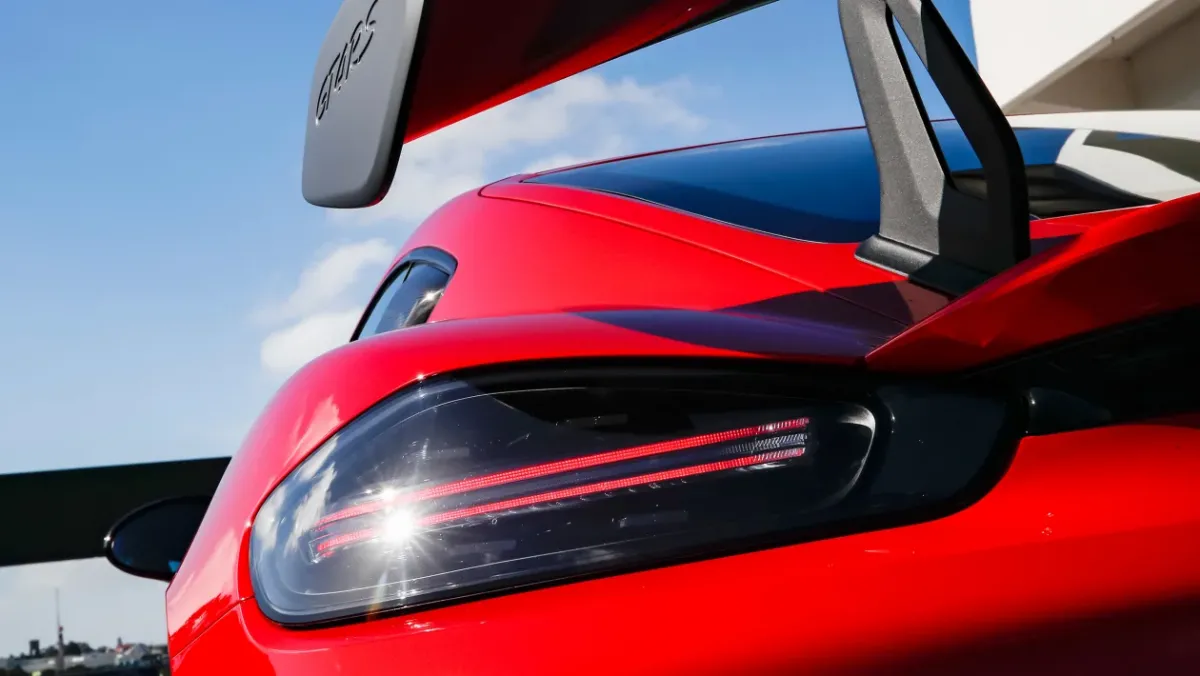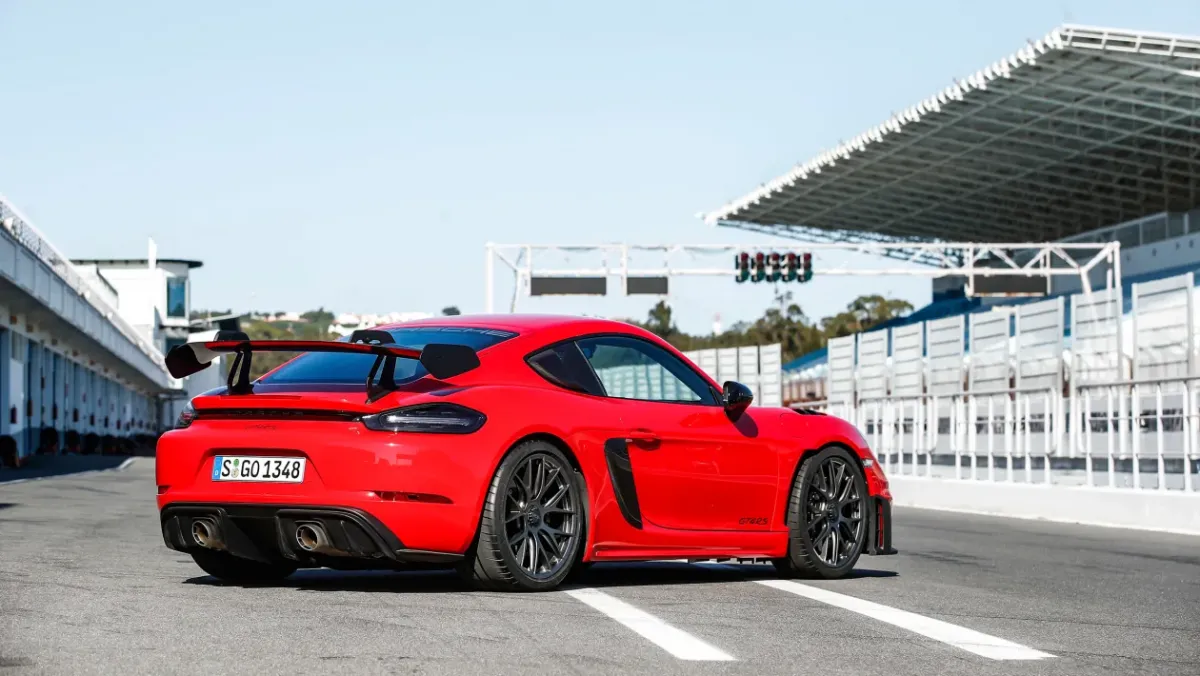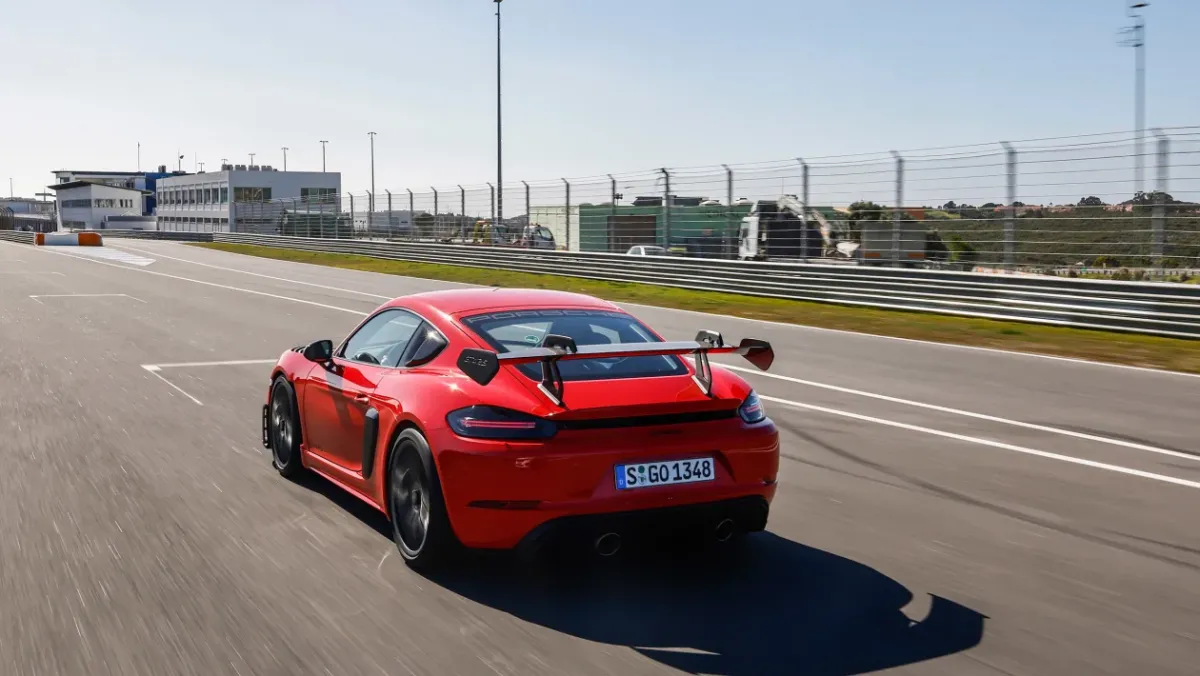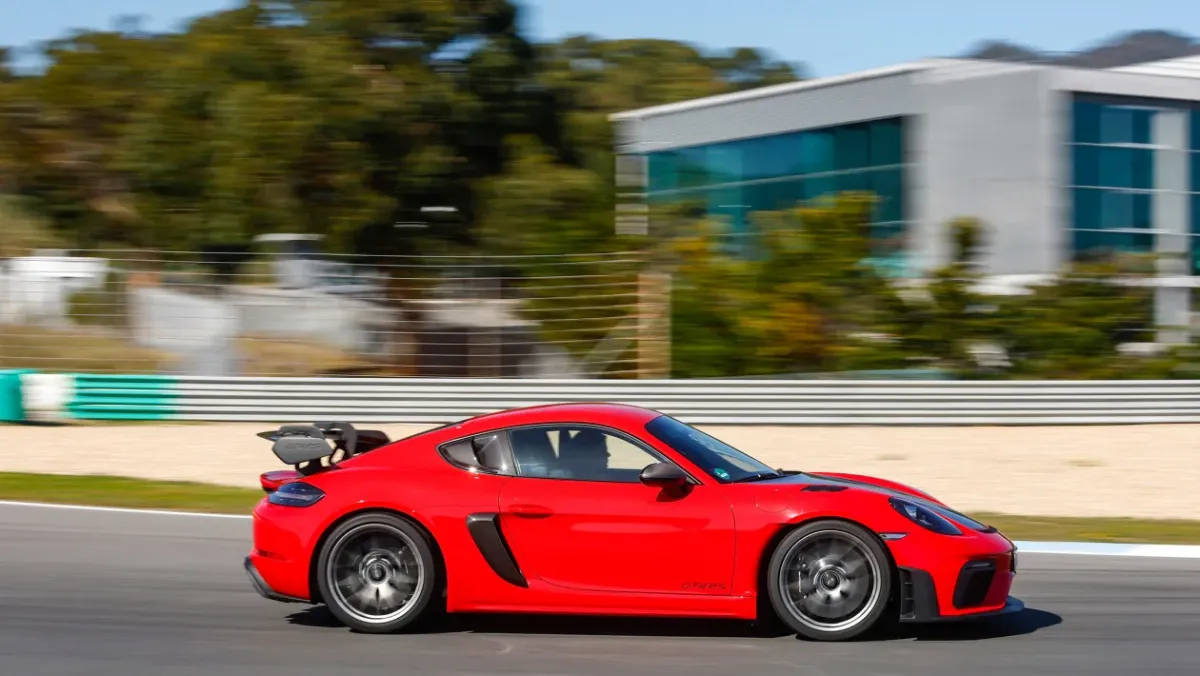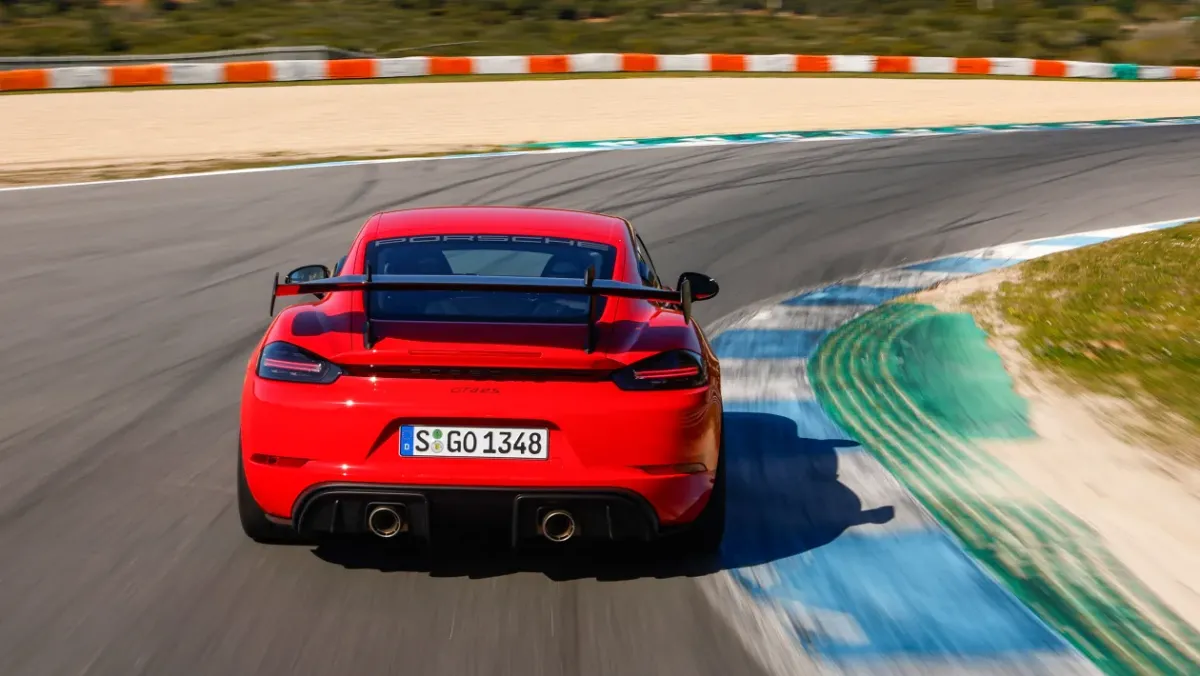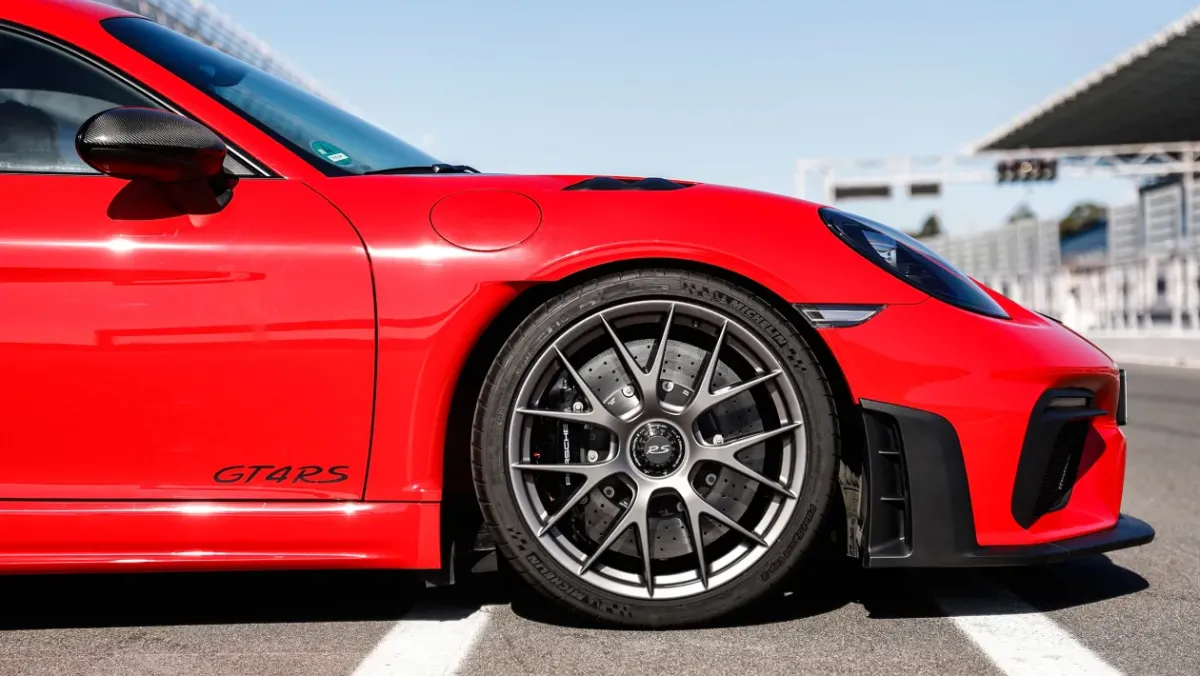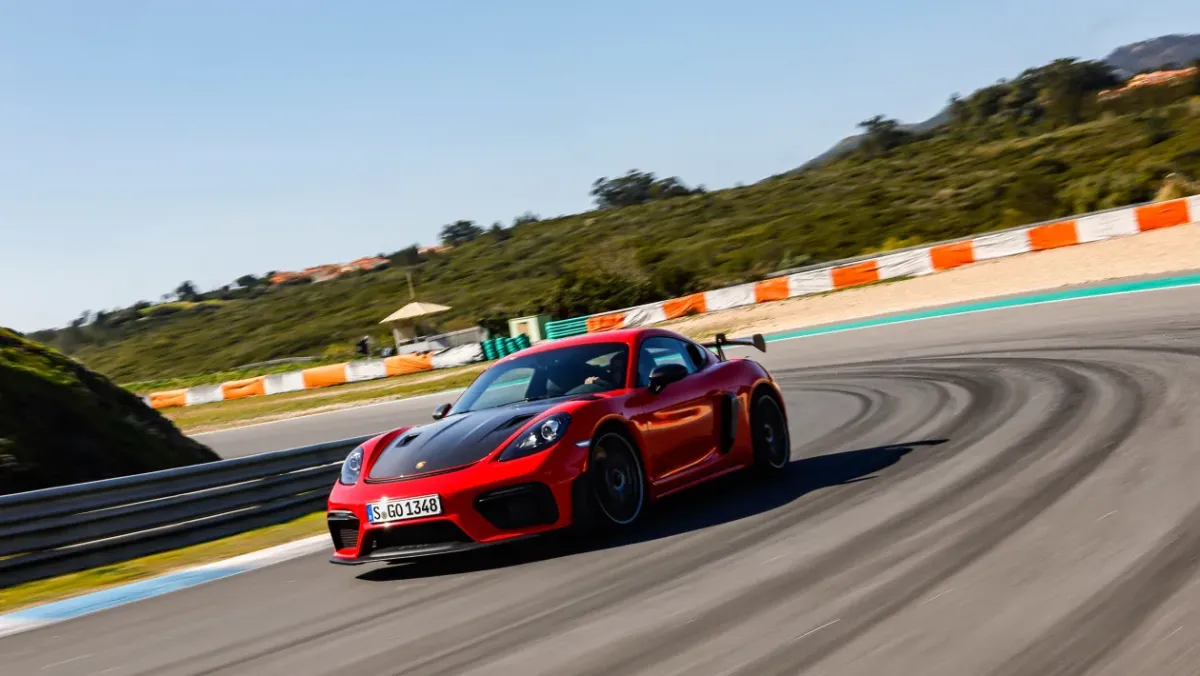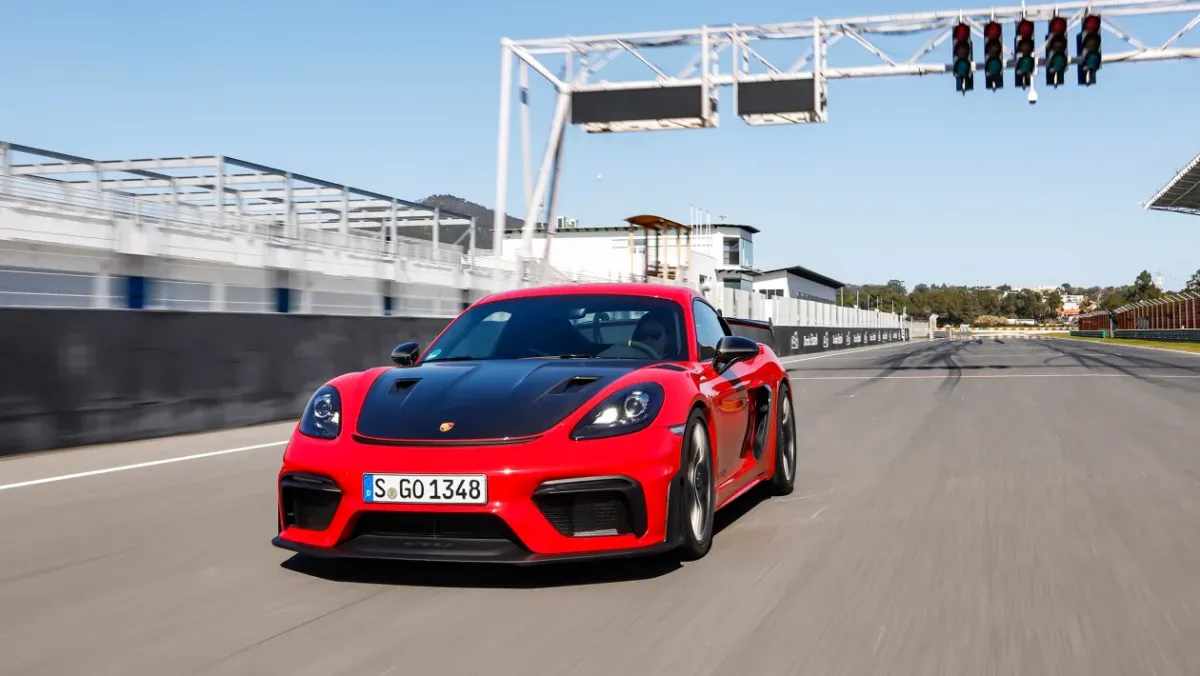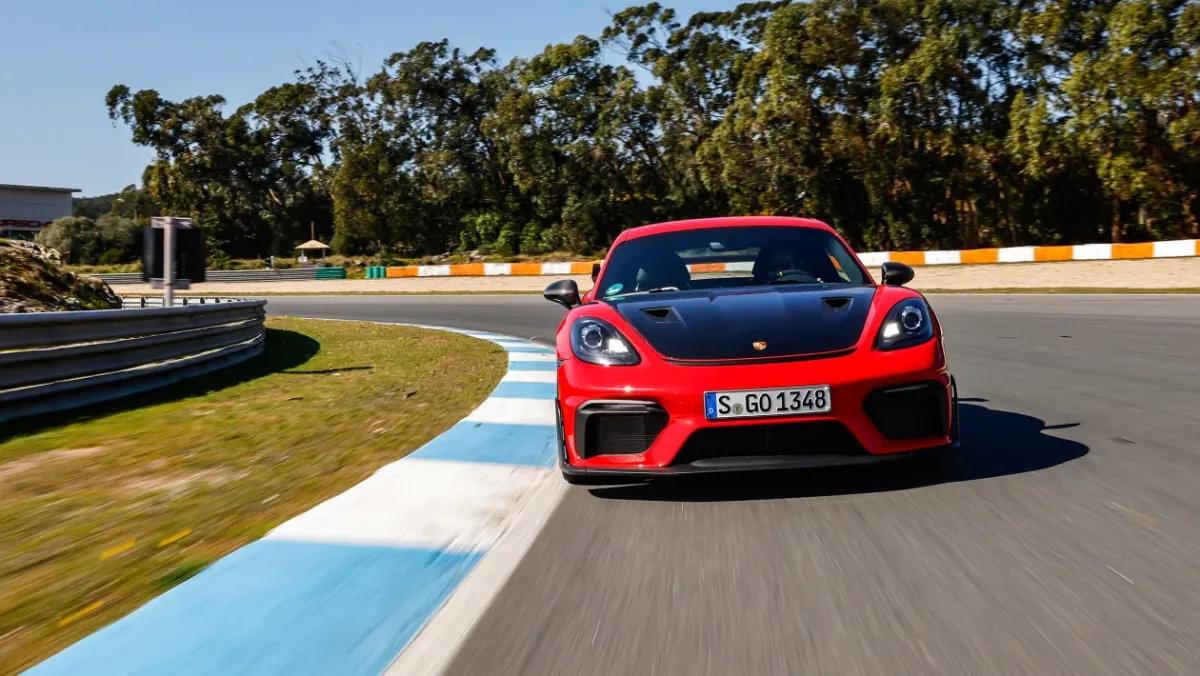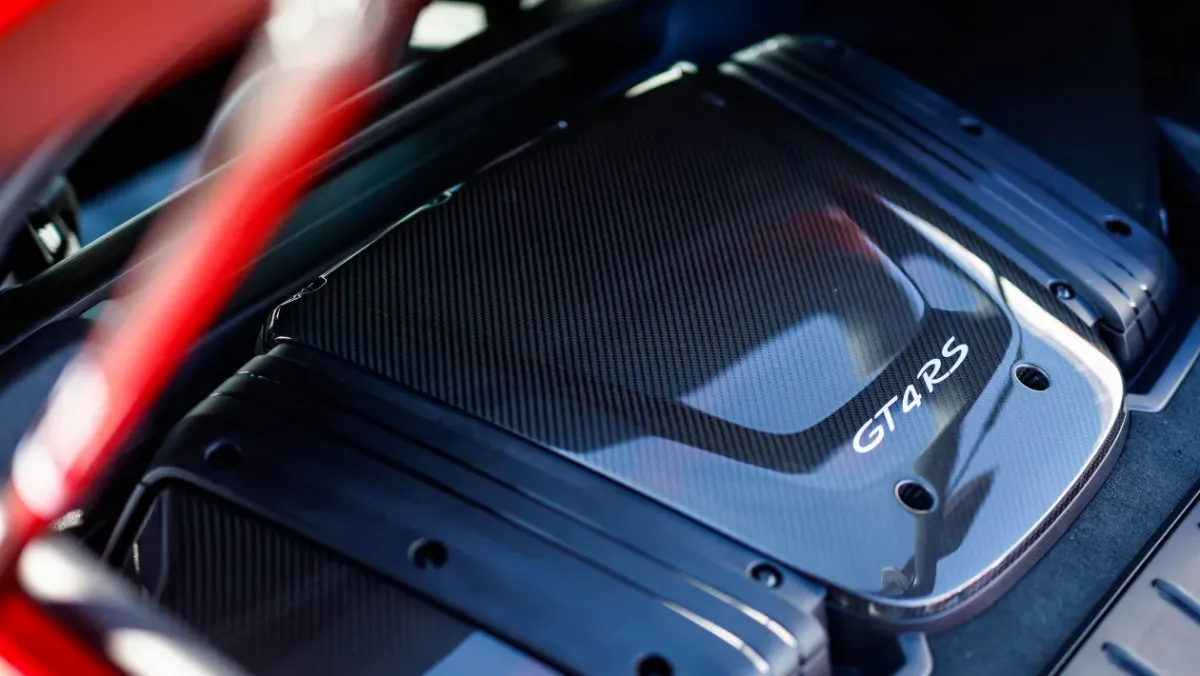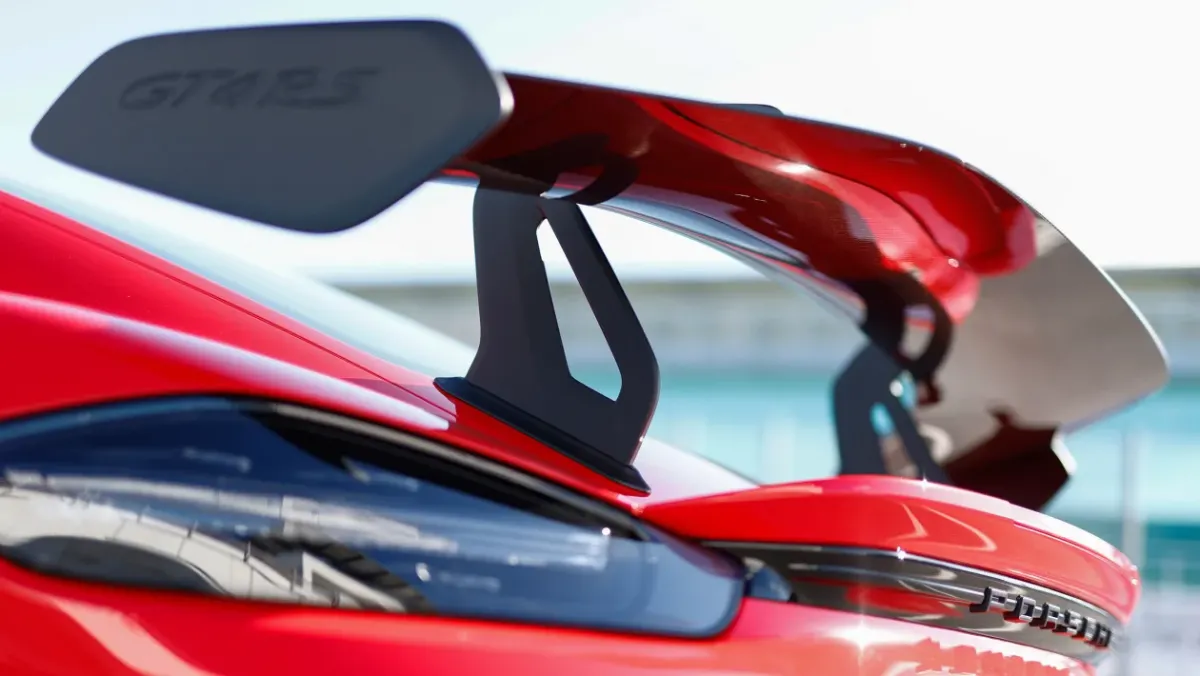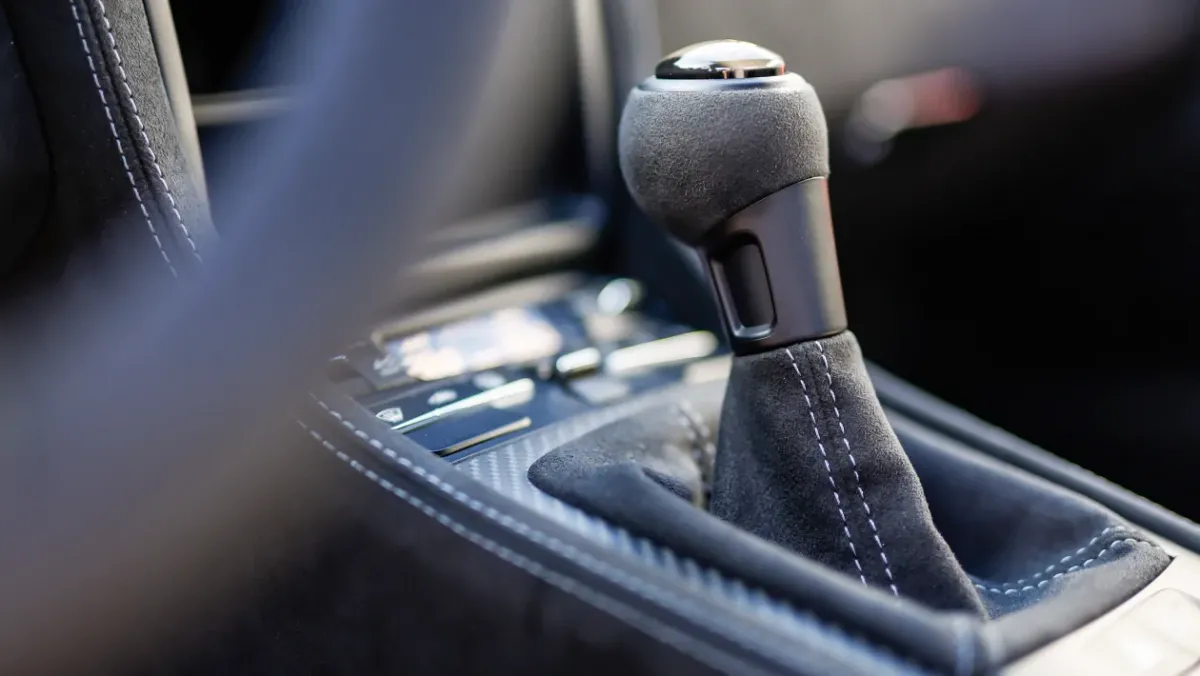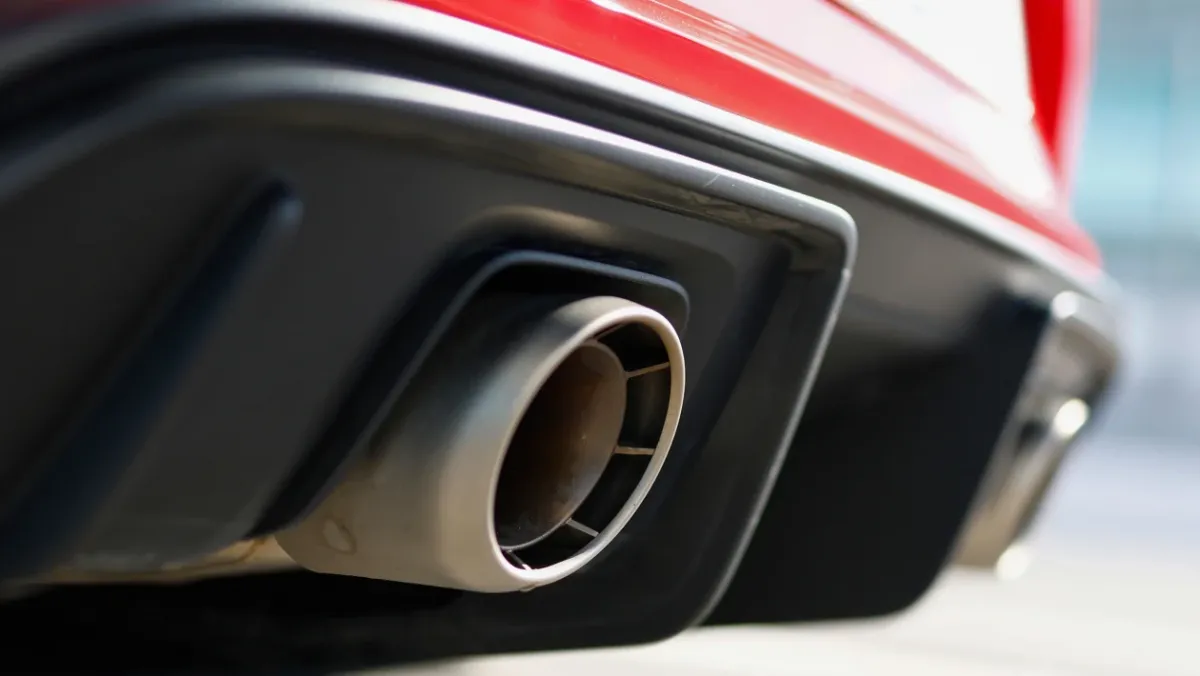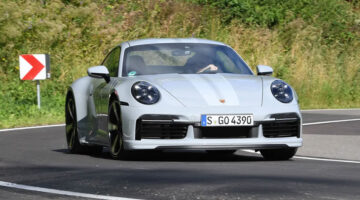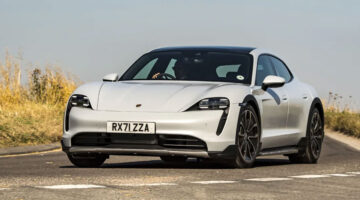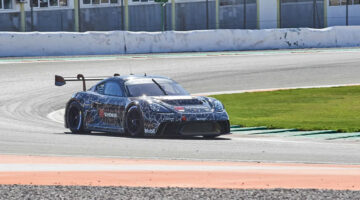This Cayman GT4 RS is the Porsche Motorsport product we’ve been waiting for, and putting it simply, it’s absolutely been worth the wait
This is a car that many people have waited a long time for. Since 2005, in fact, when the 987 Porsche Cayman S made its debut. What a great car that was, and still is, particularly with current values, but as lithe and responsive as the early Cayman was, inevitably the talk was of what what it would be like with a 911 engine (then a 997’s 3.8-litre lump), or even better, a GT3’s unique 3.6-litre motorsport engine.
At the time Porsche was not confident to make such a car – a car that could challenge the 911 model line for outright performance. Then back in 2015 it took the leap of faith, and introduced the 981-series Cayman GT4, and an instant future classic at the same time. At last, the Cayman had a 911 engine, but still not a GT3 one.
What we didn’t know then, but detailed here in our earlier GT4 RS pre-story, was that Porsche’s GT department had indeed built such a car in prototype form, and knew exactly what it needed to do to make it a viable production car when the 911 and Cayman model lines evolved into their latest generation. With the redesign and re-positioning of the motorsport engine’s oil tank, the path was clear for the engine to fit both 992 GT3 and Cayman installations, and that latter car is the one you see here: the GT4 RS.
Rather than delve too deeply into all the technical info and background again, I’d encourage you to read our pre-launch story linked to above. Simply put, the GT4 RS uses the latest ‘MDG.G’ 4-litre, naturally aspirated flat-six engine – shared with the 992 GT3, and the 911 GT3 Cup and 718 GT4 RS Clubsport racing cars, with the only difference over the GT3 being a completely different intake and exhaust systems. That’s through necessity, not any inter-model hierarchy, because the engine must obviously ingest its air differently in a mid-engined car (we’ll talk more about this shortly), but the exhaust gases also have to find their way out of the car, and here the Cayman is at a small disadvantage over its GT3 brethren, as the length of the exhausts is both longer and more convoluted to clear items such as the driveshafts – problems that the rear-engined 911 never has.
Hence, the final figures of 493bhp at 8,400rpm and 332lb ft of torque at 6,750rpm (GT3 is 503bhp/347lb ft), with the rev limiter set to 9,000rpm. The only gearbox available, as has become the RS model norm, is a twin-clutch PDK, but crucially the GT department has lowered the overall gearing to the point where seventh is no longer overdriven, and top speed is achieved in that gear. Given that long gear ratios have been one of the few criticisms of Porsche GT cars in recent years, this could make a major difference.
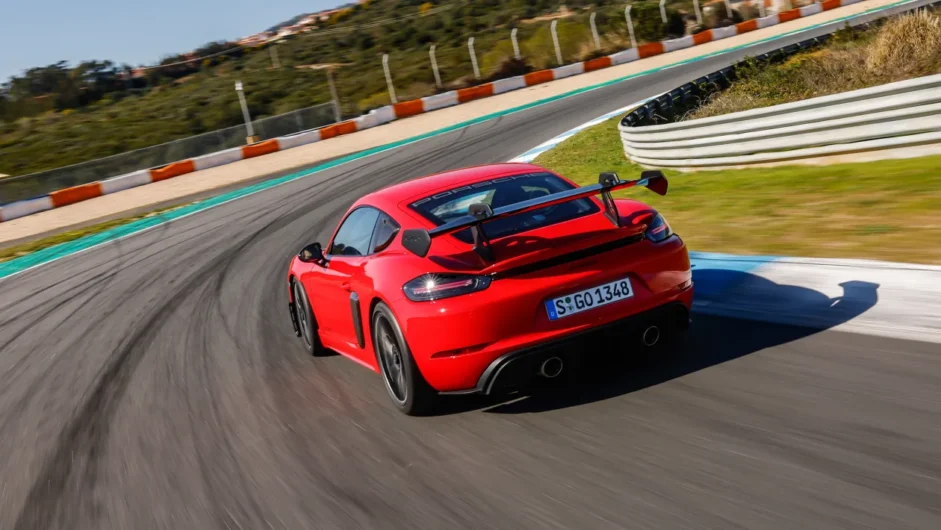
At 1,415kg DIN, the GT4 RS is some 35kg lighter than a PDK-equipped GT4 (thanks to items such as a CFRP bonnet and front wings, thinner glass and less sound deadening material), with the estimated overall weight saving of 60kg being negated in part by the sturdier componentry necessary to cope with 493bhp. The front brakes are 10mm larger than the GT4 at the front (now 390mm), but carbon ceramics (410mm at the front) are of course an option, while there’s a claimed 25 percent increase in downforce thanks to a four-way adjustable front splitter, aero elements under the car and that swan neck rear wing, which can be adjusted through three angles of attack. The suspension is ball-jointed throughout, with a 30mm lower ride height than a regular 718 and a wider track both at the front and the rear. Spring and damper (with PASM) tuning is all bespoke to the RS, while there’s the PTV torque vectoring on the rear axle and a mechanical rear LSD taken from the 991.2 GT3.
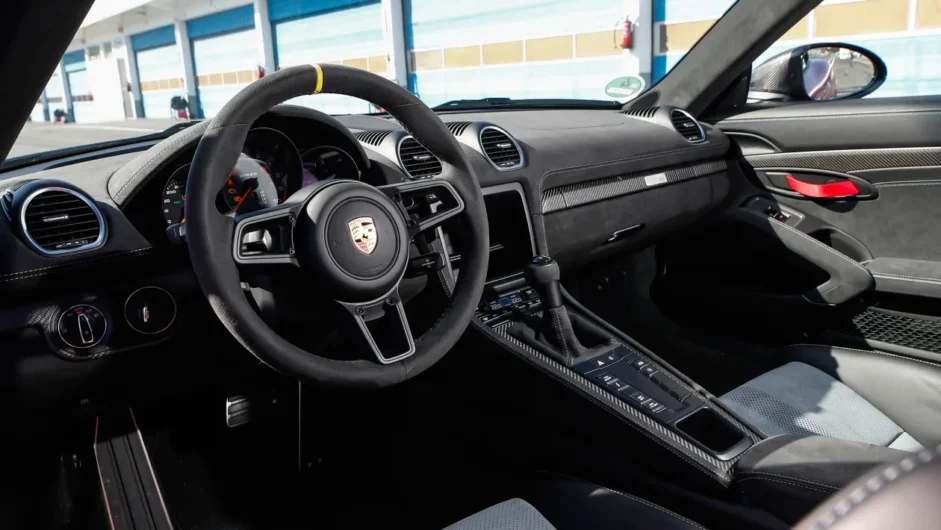
All of the above tends to lead to some heady expectation, and as you approach the GT4 RS it certainly looks the part – every inch the road racer, and of course, one with it’s own motorsport twin in the form of the new GT4 RS Clubsport GT4-series racer (not to be confused with the no-cost ‘Clubsport option’ for this road car, which brings a half cage, driver harnesses, etc). You can up the ante even further with the option of the $11,171 (or $14,020 with titanium half cage) Weissach Package, which brings various carbon exterior parts and exposed carbon to the bonnet, a host of other small embellishments and the option to buy the eye-wateringly expensive magnesium wheels at a further $13,186 a set.
But the magic really starts when you wake that flat six behind your head, because it’s at this point that reason and almost anything else logical gets thrown out of the window. The 4-litre engine breathes through twin intakes that take the place of a 718’s usual rear quarter glass, the path from your inner ear to the six individual throttle bodies is a short and extraordinarily direct one. Every tiny nuance of throttle opening elicits a different response from the engine: a breathy whirr on light throttle, the sound of air rushing forth as you press harder, and a roar and then scream at high load and revs that burrows straight through you. It is infinitely variable in tone, depth and resonance, entirely natural, organic, and even more immediate than you’d find in a GT3, and so it matters not that turbocharged supercars might quote figures upwards of 800bhp, that there are EV hypercars with well over 1,000bhp, for we are kidding ourselves if we think their dull, often augmented or entirely artificial soundtracks are on a par with a naturally aspirated engine that revs to 9,000rpm and lies just inches from your back.
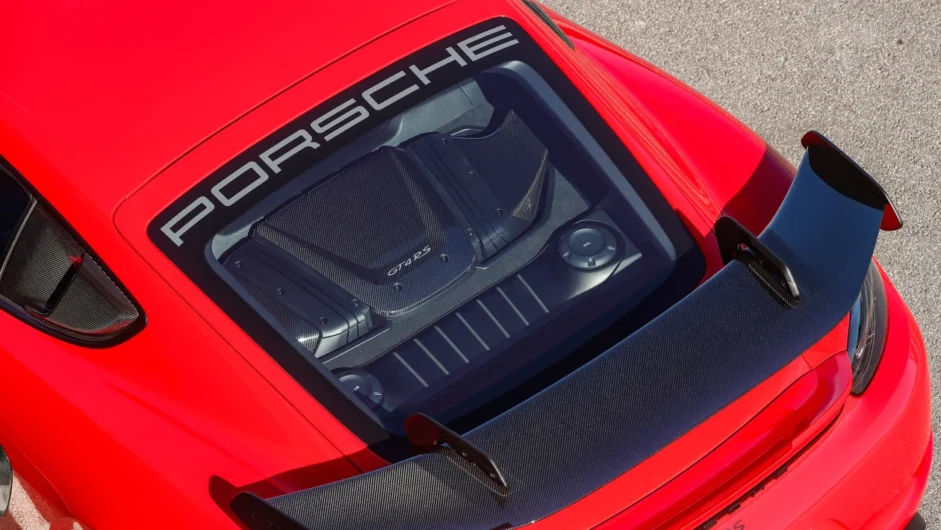
And the performance is very, very strong: the quoted 0-100kph time is 3.4sec, and it feels like it too, but what really makes the difference is the gearing, because in effect the GT4 RS always feels like it’s ‘switched on’, particularly on the public road. Whatever the revs and speed, a brush of the throttle has it snapping ferociously forward. At motorway speeds it’s civilised enough, but any incline, or subtle overtake that requires use of the right-hand pedal, and there’s that noise again, filling the cabin, an immediate partner to making progress. Despite an extra 1000 revs to play with over the GT4, the RS hits the limiter in second gear at around 112kph, compared to around 137kph in a GT4 manual. In this way, and with everything else about the powerplant, the RS doesn’t feel anything like a regular GT4 at all – it is a car with its own personality; an irrepressible, dynamic force that wants to be driven hard, everywhere, all the time.
More recognisable is the way it steers and stops, which is to say superb. But then so is the regular GT4 in this regard, and the RS just feels like one of those but more so. It’s firm riding but never uncomfortable, has a steering response that’s deft to the point where any notion that an electrically assisted rack can never feel natural and communicative is laughable, and possesses a startling amount of road grip. When those limits are breached it’ll slide very controllably at the rear, but it’s a mid-engined car with a lot of inherent grip, not a torque-heavy front-engined machine, so in the dry at least it needs some deliberate provocation to be a hooligan. Get it moving around and it’s deliciously controllable, but most of the time it’s about revelling in how inclusive and accurate the driving experience is.
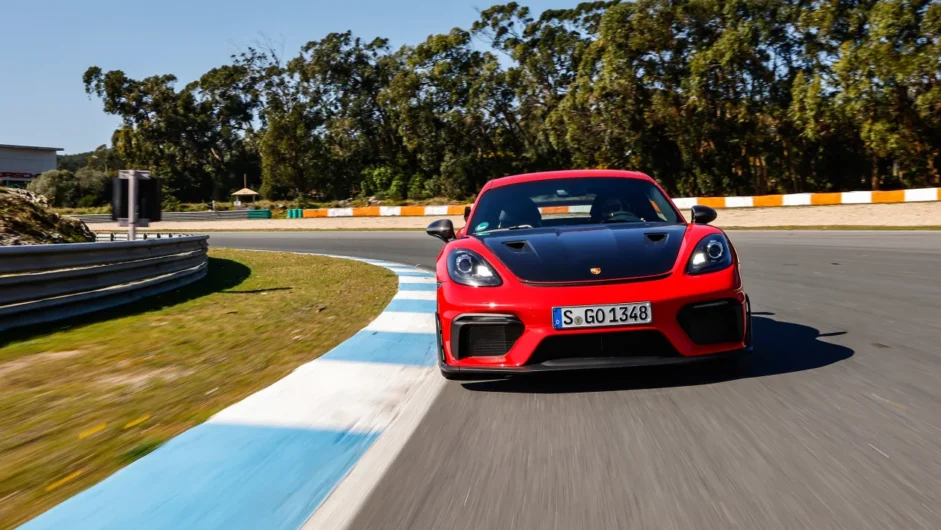
Gearchanges are accessed by either the paddles behind the wheel or with the shifter on the centre console, which as in the case of the GT3 looks exactly like a manual gearlever and works like a sequential shifter. I find myself using either method, for no real reason, and the blip of revs from the engine is utterly addictive – a real spit of revs where it seems impossible the crank can spin up that fast. It’s for this reason, and the high reach of the rev band, that the omission of a manual option doesn’t seem like the issue it might otherwise have been. It’s hard to deny that the PDK box doesn’t suit the car.
We also drove the GT4 RS at Anglesey circuit, but unfortunately our session is restricted by heavy rain that makes splashing around the course a constant search for grip. But with the incredibly sharp and precise nature of the RS’s throttle it’s possible to drive the car right up to and over the limit of grip in the knowledge that you can ask for just enough power, but not inadvertently too much in any given situation. With the engine braying and the chassis making you feel like an integral part of the car, it’s an intense and rewarding experience.
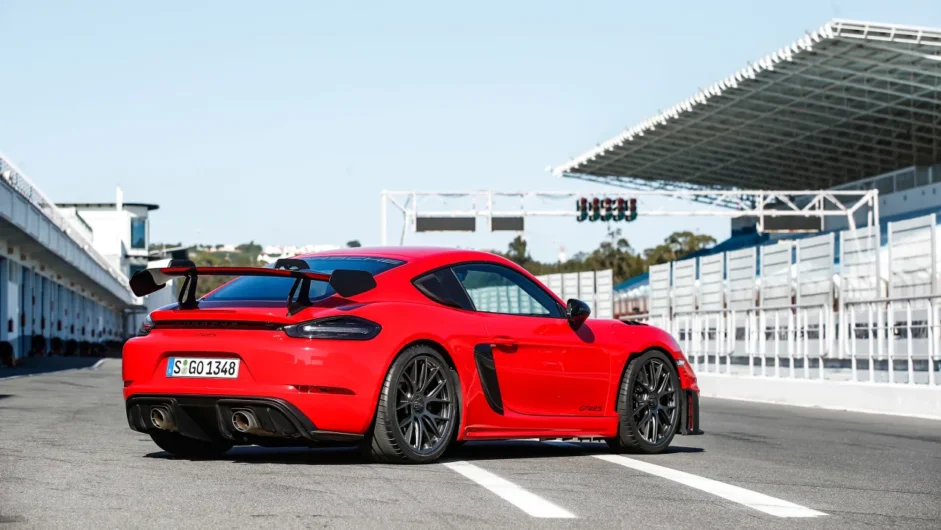
Prices and rivals
As you can probably tell, the GT4 RS is quite some car. You can inflate the $136,557 list price with options and personalisation, or you can have it just as it is, and that’s also perfectly fine. And while there will inevitably be the outcry that actually securing a build slot is impossible unless you’ve a very prolific customer, so Porsche insist that there are many builds slots for a few years to come, and if buyers are patient then they will get their cars in due course. Time will tell on that one, but even if it’s a long time coming, much like those dreams back in 2005, it has been, and will be, so very worth the wait.
This article originally appeared at evo.co.uk
Copyright © evo UK, Autovia Publishing

